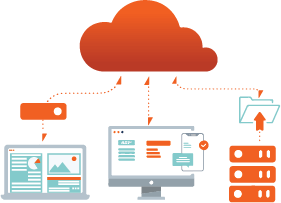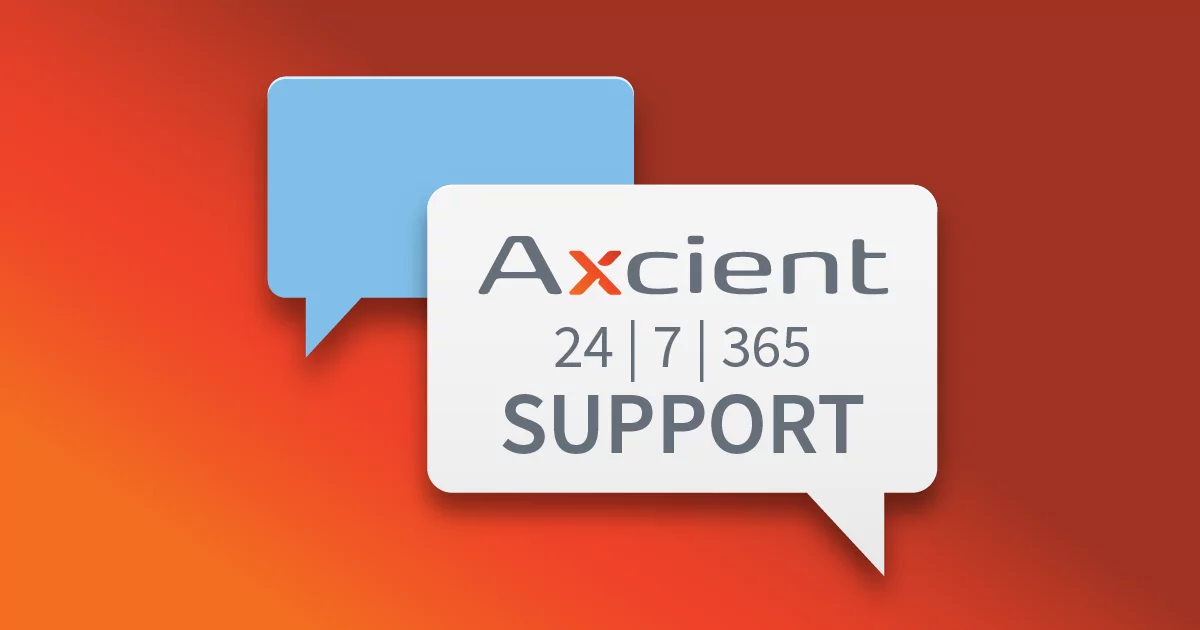
Optimal Target Verticals for MSPs
More MSPs are choosing to carve out a vertical or technical specialty to focus their standard service offerings. While some may worry a narrow approach could limit growth, it’s the opposite. MSPs that adopt a vertical or technical specialty are generally more profitable and experience more robust sales growth than the average MSP.
When small to medium-sized businesses (SMBs) search for IT support, more are turning to MSPs specializing in their vertical. Businesses feel safer from a cybersecurity standpoint, compliance perspective, and all-around understanding of their operations and goals. While the trend to target verticals has been moving for a couple of years, recent statistics and survey results highlight its success. Keep reading to explore these questions and gain new insights.
- Why should MSPs consider developing a specialized service strategy?
- What are the optimal target verticals for MSPs?
- How do you choose the best solutions provider to fulfill your vertical specialty?
Why Is a Target Vertical Important?
Today, MSPs may find headwinds in selling based on their help desk, network administration, backup, disaster recovery (BDR), endpoint security, or vCIO offerings. While these MSP services used to be somewhat unique and innovative, that is not the case in 2022.
Additionally, the cost barrier to compete as an MSP has never been lower. The capital expenditures for the software tools and platforms that deliver MSP services can now be had ‘As a Service.’ Additionally, services such as service desk and Network Operations Center (NOC) are also easily outsourced.
The additional influx of competitors and lower barrier to entry has led to commodity pricing and marketing of basic MSP service offerings. This competitive challenge tells us why an MSP would specialize in a vertical. It was established in that the largest and highest growth MPSs had established a vertical-specific presence. Since then, verticalization has proven valuable for many MSPs who position themselves as experts in their chosen vertical or specialty.
“Only 22% of the companies that earned a spot on the MSP 501 this year offer no sort of vertical-market focus.”
– MSP 501 2018 Report by ChannelFutures
Another popular channel survey is the “Top 100 Vertical Market MSPs” by ChannelE2E. This annual worldwide survey is conducted with MSPs in each of the top vertical markets, including healthcare, legal, government, financial services, and manufacturing. In the 2022 edition, survey respondents generated a combined $3.05 billion in vertical market annual recurring revenue (ARR), up 42% from $2.14 billion in 2020. These surveys and others like them confirm that the best-performing and higher-growth MSPs have developed a vertical specialty.
How Can Target Verticals Impact Sales and Marketing?
A target vertical also provides a higher value proposition when selling your MSP services. Most business owners seek an IT provider that they perceive understands their business the best. This is where a vertical or technical specialty will help to separate your MSP from the others. Again, put yourself in the business owner’s position. If all things are considered equal from an IT support and services standpoint, who would you trust more? Chances are, the MSP that exhibits the most business knowledge and understanding of the business workflow will win. Even better, a specialized MSP will most likely be able to charge a premium for the same services.
“The Top 100 Vertical Market MSPs now manage more than 6.1 million users across their customer sites as of 2021, up from 3.1 million in 2020.”
– Top 100 Vertical Market MSPs, 2022 Edition
Effective selling of MSP services requires MSPs to have conversations ‘higher in the IT value-stack.’ These conversations with customers and prospects should be around business workflow and the line-of-business platforms. As a specialist MSP, you should be fluent in the business vernacular of these prospects and customers and understand the key drivers of their industry, and their major challenges and opportunities. This inside perspective keeps the conversation about business outcomes rather than just service-level agreements or technology.
What Are The Top Industries Targeted by MSPs?
There are revenue benefits to identifying your niche, but which verticals produce the highest rewards? According to the 2022 survey, MSPs’ most successful vertical market is healthcare and manufacturing, with continued interest in financial services, legal, and government opportunities.
Since last year, manufacturing verticals increased the most, and healthcare saw the most significant drop. The uptick in manufacturing is most likely due to the speed and automation now required in manufacturing to stay competitive, and the increasing security needs to combat targeted supply chain attacks. No one is a stranger to the supply chain challenges of 2022 and likely beyond. Healthcare probably decreased compared to the initial pandemic-related IT boom in early to mid-2020 through 2021.
What Does a Specialized MSP Look Like?
Having a vertical or technical specialty is a crucial advantage for smaller MSPs that develop a reputation for being a boutique provider with high expertise. A great example of this is GPL Technologies in Los Angeles, California. Their founder and CEO, Brian Terrell, believes that selling to a niche helps them develop more significant expertise in that area. Brian says, “In our case, we started by supporting Hollywood film studios. Because we understand all aspects of our client’s business, we provide greater value to the customer. It takes a lot to craft a business that truly understands the end users’ business model. But, the reward is worth the effort.”
It may seem overwhelming for some MSPs to tackle the effort of developing a vertical; however, there is a competitive advantage to doing so. Terrell points out, “When you master your vertical, clients will seek you out for advice. If you are bidding on a project, you will have preference over others that do not have this proper domain experience.”
How do you go about establishing a vertical or technical specialization? Terrell advises, “Attend industry conferences and spend time with the people who work in your target vertical. Most knowledgeable people are willing to share information.” Your entry point into a vertical will require a deep understanding of the things that matter most to the business in that industry. Must-haves like compliance with local regulations, federal laws, industry-specific standards, and unique services and features that address pain points are critical to demonstrating your dedication to the vertical.
How Do MSPs Choose Strategic Vendor Partners for Target Verticals?
When developing a deeper specialty, seek out already established vendors across your customers and support the same line of business or technical solution. Developing a strategic relationship with these vendor partners will help MSPs establish domain expertise in the sector. It will also lead to a more collaborative support strategy for customers you have in common.
After getting the first vertical or specialization established within your MSP, look for other company areas to do the same. When you break it down, most of your support services will be shared across the verticals, such as the service desk and NOC. Most of the effort goes into developing ‘business consulting’ skills and having dedicated resources for leading the business conversations for this vertical. Remember, at this stage; it’s more about understanding the business workflow than it is about technical support. Hire appropriately.
Vertical-Specific Compliance and Critical Capabilities with Axcient
As a 100% MSP-dedicated solutions provider, Axcient enables MSPs to target verticals and technical specialties. With pooled data storage and secure retention included in all of our business continuity and disaster recovery (BCDR) solutions, MSPs can easily meet multi-year standards and long-term compliance requirements. This is especially important for clients in highly regulated industries like healthcare, legal and financial services, and government that require three, five, seven, or even 10-year retention periods.
Additionally, the critical capabilities included in our BCDR solution, x360Recover, directly address many of the challenges confronted by a range of different verticals. Infrastructure choice and flexibility, including hardware-free BDR with x360Recover Direct-to-Cloud (D2C), enable clients to back up on the systems they feel most comfortable with. In addition, always-on features like Virtual Office for disaster recovery testing and instant virtualization, AirGap anti-ransomware technology, and AutoVerify automatic backup integrity checks speak directly to the unique needs of vertical-specific clients.
If you’re thinking about narrowing your focus, highlighting a specific niche, and growing your MSP, see how Axcient can help you accomplish more with just one solution.
Related posts
8 Tips for Optimizing Your Disaster Recovery Strategy
If disaster strikes, how will your organization respond?

How well could you sleep with reliable cloud-based backups and recovery?
Take a deep dive into Axcient’s proprietary, automated security features to see how we’re ensuring uninterrupted business continuity — no matter what:


